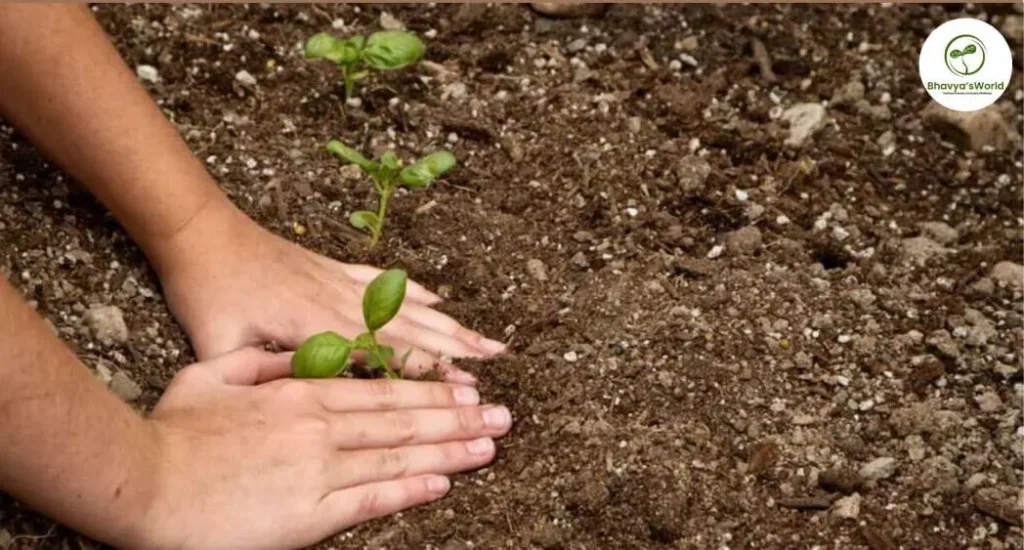Planting tulsi at home is not only easy but also beneficial for a healthy lifestyle.Whether you are interested in growing tulsi from seeds or directly planting the sapling.
This guide will help you to understand the entire procedure,for selecting the right variety to use necessary care techniques.
People also know Tulsi as Holy basil. The connection with religious and spiritual significance gives the word ‘ Holy’ its meaning, while the origin from the perennial herb and shrub family informs the word ‘Basil’, which refers to its use as common cooking basil.
Why do People Plant Tulsi?
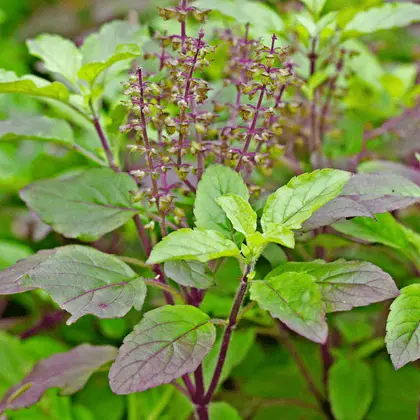
People consider Holy basil important in Indian cultures, not only because it enhances the beauty of your garden, but also due to its medicinal and religious significance. Moreover, don’t forget about how immensely tulsi is filled with nutritional properties.
Furthermore, gardeners often plant it to be use as Herbal Tulsi Tea, which practitioners commonly consult in Ayurveda. Additionally, beginners find that planting tulsi is easy to grow and requires minimal care, making it a good choice.
Choosing Correct Type of Tulsi for Planting Tulsi
There are different types of tulsi with each one having its own benefits.Here is some information to help you choose the best type of Tulsi for your home but remember choosing the right type is essential for successful Holy Basil planting.
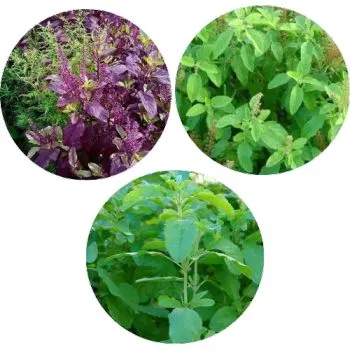
| Ram Tulsi (Ocimum tenuiflorum) – Are commonly cultivated in areas (like India ,China ,Brazil) – Ram tulsi has bright green leaves with a mild and sweet smell. – It helps to reduce stress ,anxiety and build immunity. – Commonly used in Tea (Tulsi Tea) and for religious purposes – Suitable for growing Tulsi in pots indoors. |
| Krishna Tulsi (Ocimum tenuiflorum) – Are less common in India. – It has dark purple leaves and is considered as the Holiest and sacred type of tulsi plant. – Krishna tulsi has a strong peppery aroma and helps to cure respiratory and skin problems. |
| Vana Tulsi (Ocimum Gratissimum) – Are distinguished as wild plants and common. – It has a strong and lemony smell – Good for outdoors because of its large size. – It is hybrid same as Rama Tulsi and Krishna Tulsi combining both of their benefits. |
Many people around the world grow various types of tulsi, each of which has different benefits and is also considered sacred.
Benefits of Planting Tulsi
Environmental Benefits
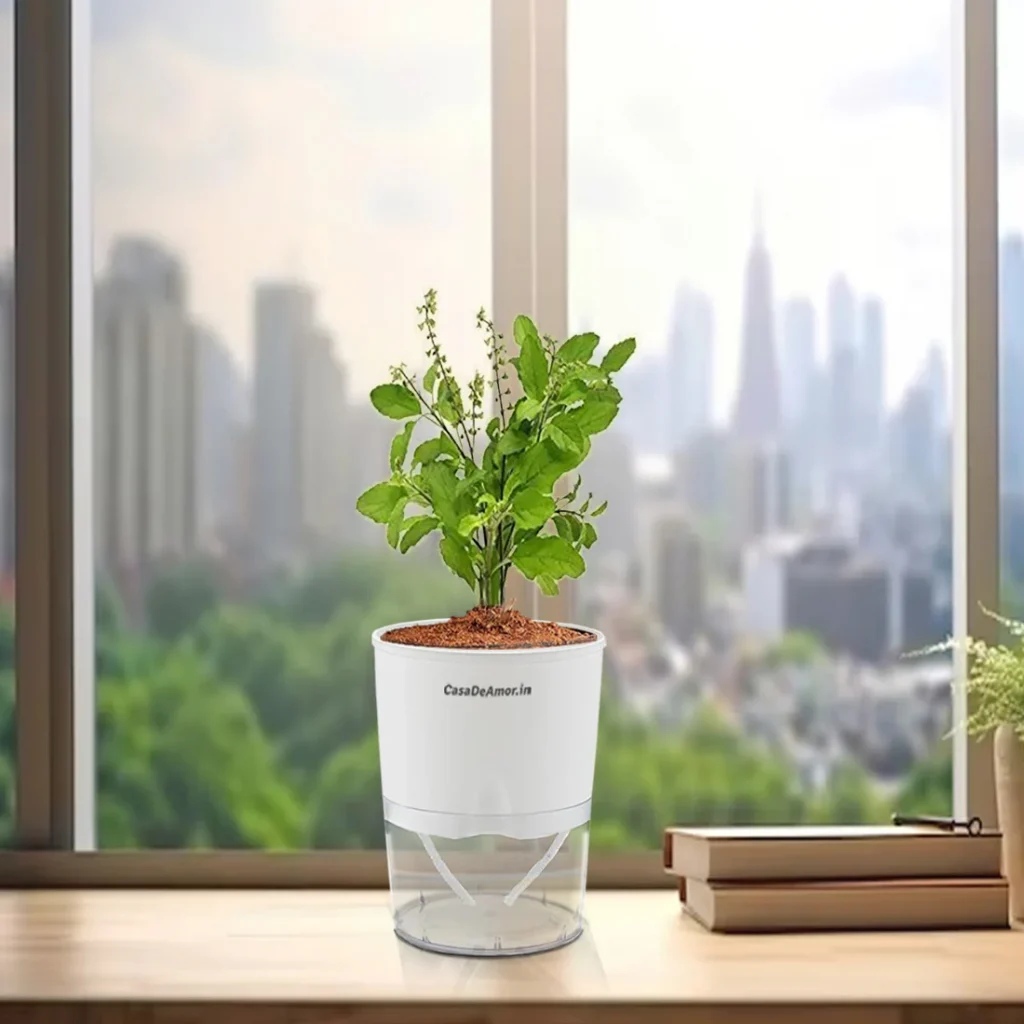
- Environment Purification : One of the benefits of tulsi is that it has the ability to purify the air by a good amount of oxygen and tends to absorb the harmful carbon dioxide which automatically leads to the improvement of a household’s air quality.
- Refreshing Climate : Tulsi plant cools and refreshes the climate of the house, especially regions that are warm.
- Connection to nature : It helps family members to reconnect with nature by watering ,worshipping and also creating a habit of taking care of Tusli plants or doing some activities of tulsi plant care as a part of their daily routine.
- Supporting biodiversity : Planting holy basil can attract bees and butterflies who are beneficial pollinators.
Health Benefits
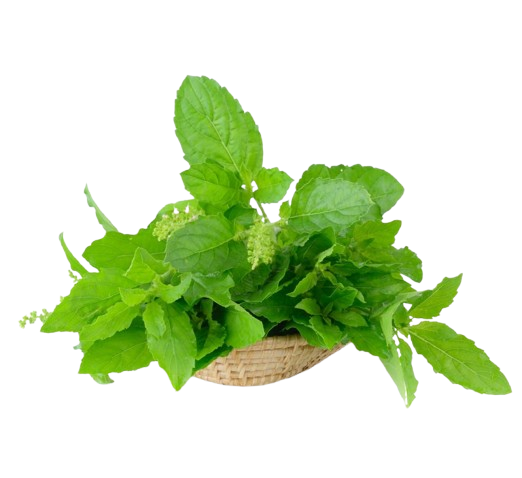
- Power of Antioxidant: When you grow tulsi, you can easily access its drops and leaves filled with rich antioxidants which help to prevent cell damage.
- Act as Detoxifier: It acts as a natural detoxifier that cleanses the liver and kidneys of the human body.
- Tulsi in Ayurveda: People regard it as a natural substance that help the body adapt and cope with stress and improve overall health, or you can say Adaptogen.
Religious Benefits

- Scared plant: People consider Tulsi a sacred plant and relate it to Lord Vishnu and Goddess Lakshmi in Hindu culture.
- Protects from Misfortune: The presence of the Tulsi plant in the home brings prosperity and protects the family from misfortune.
Growing Tulsi Plant from Seeds
Appropriate Weather
| Usually, the perfect temperature for holy basil planting is considered to be 15-25 degree Celsius; however, if numbers are discussed, but in layman language, it is stated that the weather should not be too cold or too hot, and this kind of weather is experienced three times in India. Spring season – Suitable for the North region Autumn season – Suitable for seed germination Monsoon time – For some parts it is suitable for seed germination, not for the north India. |
Choosing Right Quality Seeds
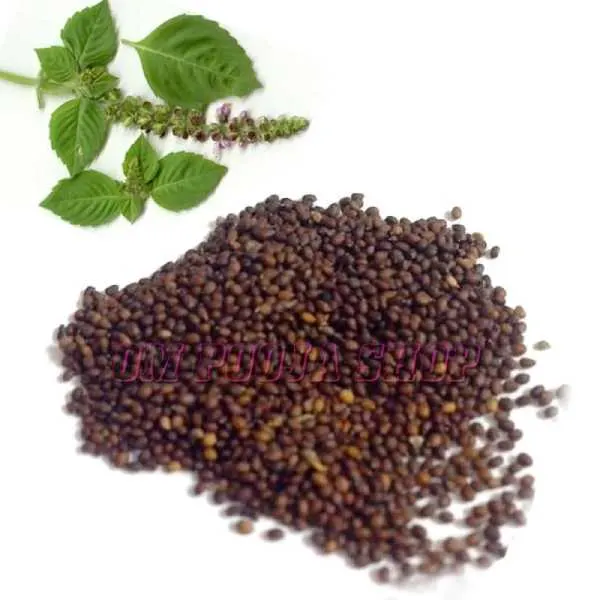
| Try to choose the best quality holy basil seeds. Additionally, they should be in a viable shelf life. If the seeds are old, then they will not germinate or, conversely, have a low chance of germination. |
Preparing the Soil
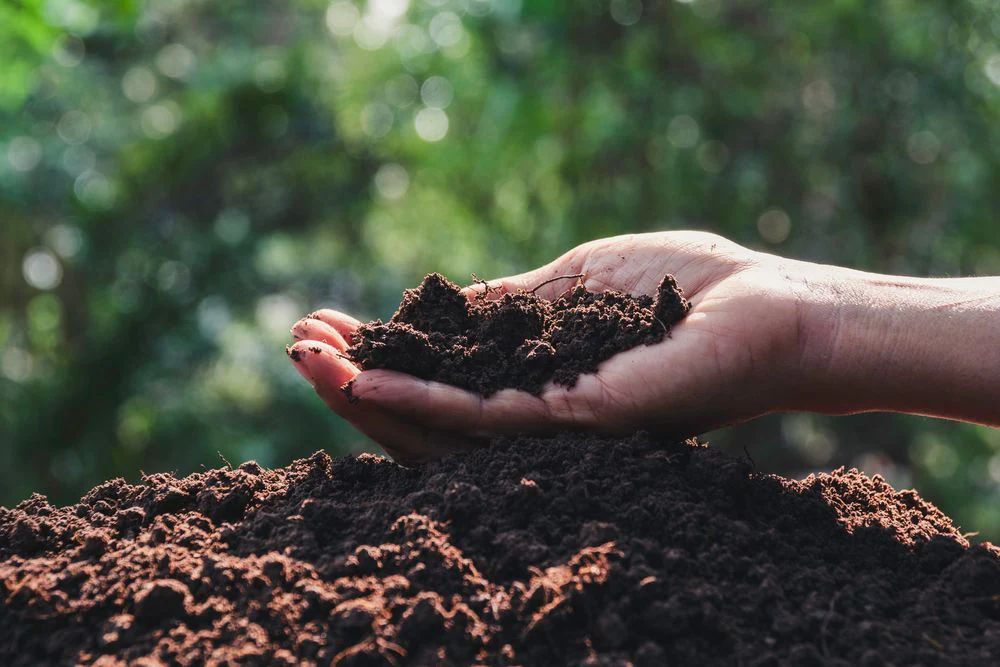
| A) Local Area Purchase soil from the local area, filter it, and remove any rocks and junk that are in the soil, and make sure that the soil is clean. te or have low chances for germination. B) Cake Named as Neem It is a cake that contains Salannin, Nimbin, and many other components. Neem cake is a natural fertilizer and pesticide that is used to protect plant pests and increase soil fertility. Small portion of this can be added to soil to grow the tulsi plant. C) Using Compost To grow tulsi plants,compost such as cow dung,kitchen waste can be used in soil in equal quantities. D) Using Sand We can maintain the balance of soil while planting tulsi by taking 3 parts soil,1 part compost,and ¼ part sand. |
You can use every component and make a fertilized soil that easily grows healthy tulsi.
How to Get Tulsi Seeds?
- Picking it from a Dried Tulsi Plant
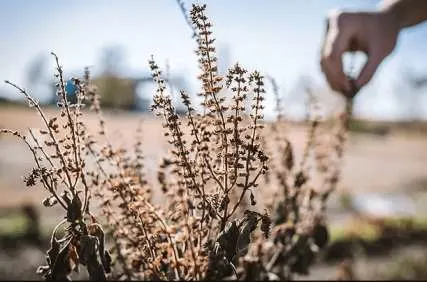
You can collect tulsi seeds from the brown, dried-out flowers of tulsi to grow new plants.
- Matured Seeds

Remember to use fully matured seeds to grow new plants and to identify this we have to see the ones who become dark brown.
- Right seeds
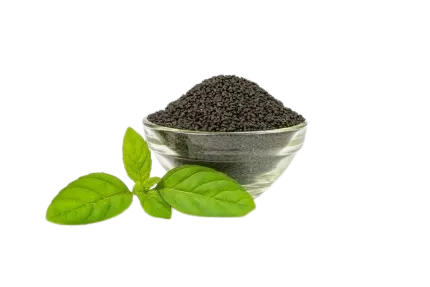
Select the right and healthy seeds from the Tulsi plant or nursery.
- Online or Offline

You can easily obtain tulsi seeds from online and offline (nursery)stores.
Sowing the Tulsi Seeds
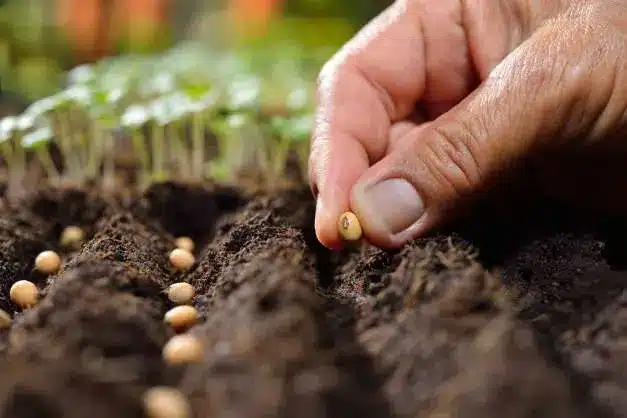
Do you want to know how to sow tulsi seeds? Here I am going to tell you the steps whether you want to sow multiple seeds or single or double seeds.They both have the same procedure only the difference is one has a seedling tray and one has pot.
1. For Seedling Trays
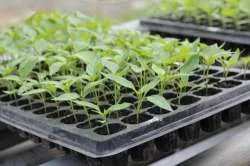
Steps to Grow Multiple Seeds
- We can use a spray bottle to moisture the surface of the tray. Pouring water directly can make the seed displaced.
- Purchase a seedling tray.
- Fill these trays with the fertilized soil.
- Water it properly,don’t waterlog it.(Make sure the soil settles and remains moist).
- Put the tulsi seeds in the correct way with proper spacing in this way their roots can have space to spread.
- Gentle put a layer or cover the seeds with soil mixture on top.You can put Coco peat which will help the soil to keep hold of water.
2. For Pots

Steps to Grow Tulsi in Pot
- Purchase a nursery pot and add soil.
- Leave a space about 1 inch at the top of the pot.
- Water it properly,don’t waterlog it. (Make sure the soil settles and remained moist)
- Sow the tulsi seeds ¼ inch under the soil gently or just sprinkle on the soil then with a loose hand just gently press them down on the surface.
- Place the tulsi pot in a bright sunny window for 6-8 hours to make it germinate .
- Normally tulsi seed will begin to sprout within a time span of 5-7 days.
- We can use a spray bottle to moisture the surface of the tray. Pouring water directly can make the seed displaced.
Procedure of Separating Sapling
When tulsi seed has grown and starts having 2-3 leaves, take a larger pot and put one sapling and place it into that pot.
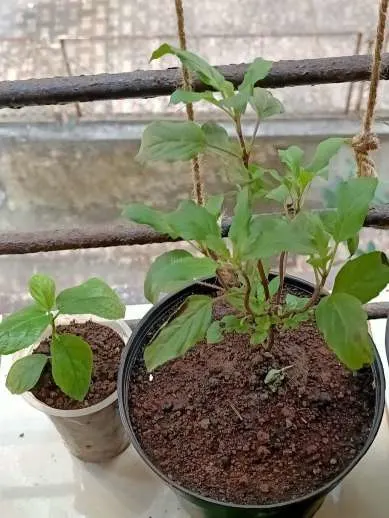
- Planting Tulsi in a Larger Pot: Purchase an 8-inch pot with holes in it and fill it with draining soil. Then take out the sapling and place it into the centre of the pot.
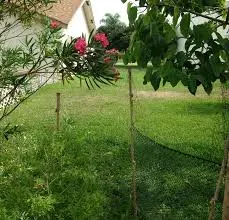
- Garden Area: You can transfer the sampling to your garden area.
Before Transferring the Sapling Remember These Things :
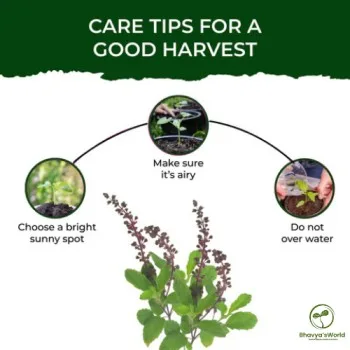
- You will need a spot that have 6-8 hours of sunlight
- Avoid putting them into dark areas.
- Should have well drawing soil.
- To adjust to the outside environment, start by placing them outside in the sun for a few hours.
- Do this continuously by increasing the time of tulsi plants staying in the sun.This will help them be okay by the outside environment conditions.
- In case, the plant is growing slow or lacking some nutrient, we can use a liquid fertiliser which is made up of cow dung.
Planting Tulsi : Seed v/s Sampling
Planting Tulsi from Seeds
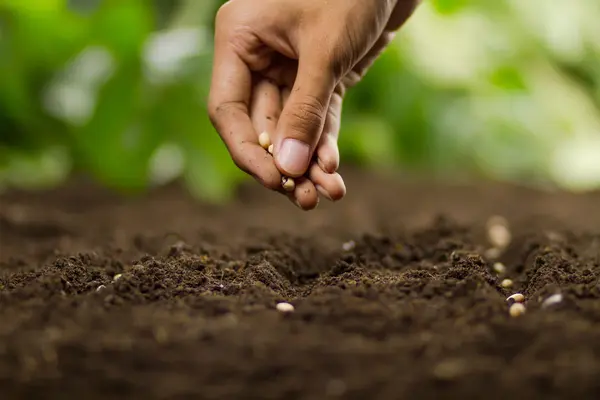
Advantages
- Cheaper: Tulsi seeds are less costly than sapling and we can purchase them in big quantities.
- Variety of choices : We can select from different types of tulsi like Rama , Krishna and Vana tulsi.
- Roots: When we plant tulsi seeds they usually develop strong roots in comparison from sapling.
- Experience : The whole process of planting tulsi to see them grow can be a very rewarding experience for gardeners.
Disadvantages
- Proper care: Growing tulsi from seeds needs a lot of care like watering on time, good quality soil and proper environment.
- Time taking : Planting tulsi from seed is a very time consuming process as it takes longer to germinate and grow into a plant.
Planting Tulsi from Sapling
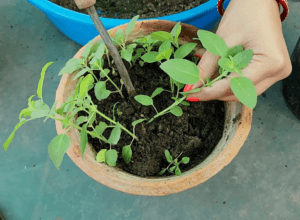
Advantages
- Result : As sapling is half grown, so will get quick results and get a mature plant.
- Easier : It is easier for beginners and it requires less care in comparison with planting tulsi seeds.
- Risk: Planting tulsi sapling has low risk to fail only if they are planted correctly.
Disadvantages
- Expensive: A tulsi sapling costs more than tulsi seeds.
- Varieties: In comparison to planting tulsi seeds that give variety ,tulsi sapling does give much choice in varieties.
Which one should you choose ?
Seeds
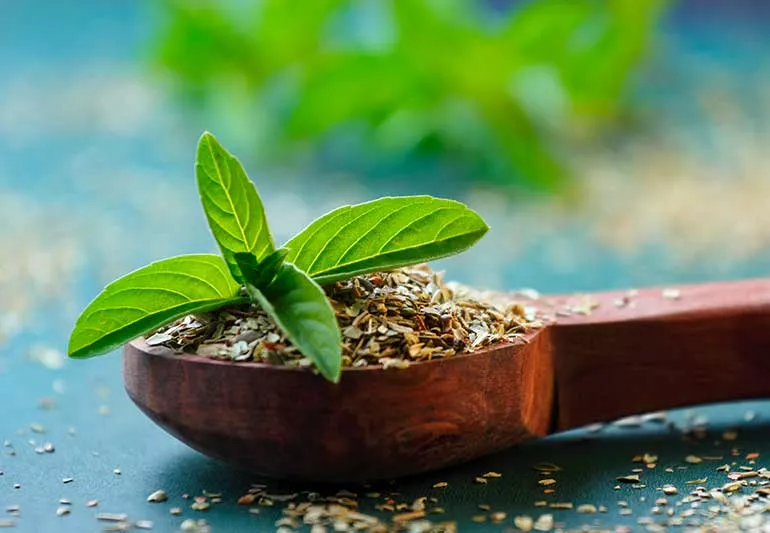
If you have patience,not wanting a quick result ,enjoy gardening and want to see the whole process of growing then choose planting tulsi with seeds.
Sapling

If you don’t have patience, prefer quick results and are just a beginner gardener and want to have a simple process go with the planting tulsi with sapling.
Tulsi v/s Basil
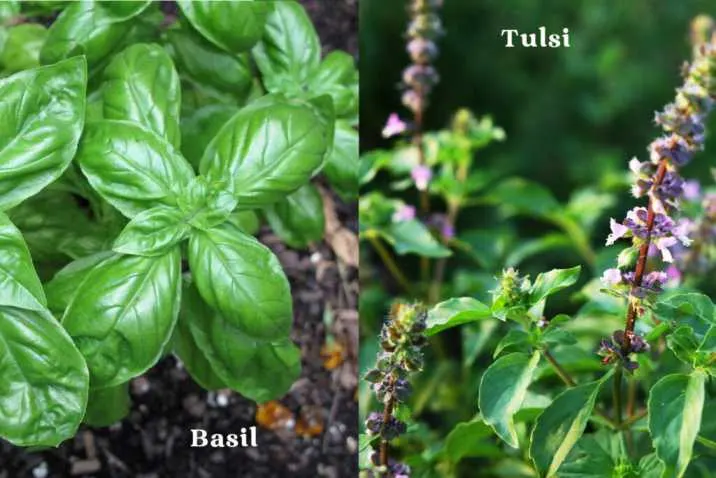
If we talk about the difference of tulsi v/s basil, then we should recognize that they both have the same starting name, which is Ocimum, and that both herbs belong to the same family, i.e., Lamiaceae, which includes mint plants and culinary herbs like rosemary, oregano, lavender, catnip etc.
Medicinal Uses of Planting Tulsi
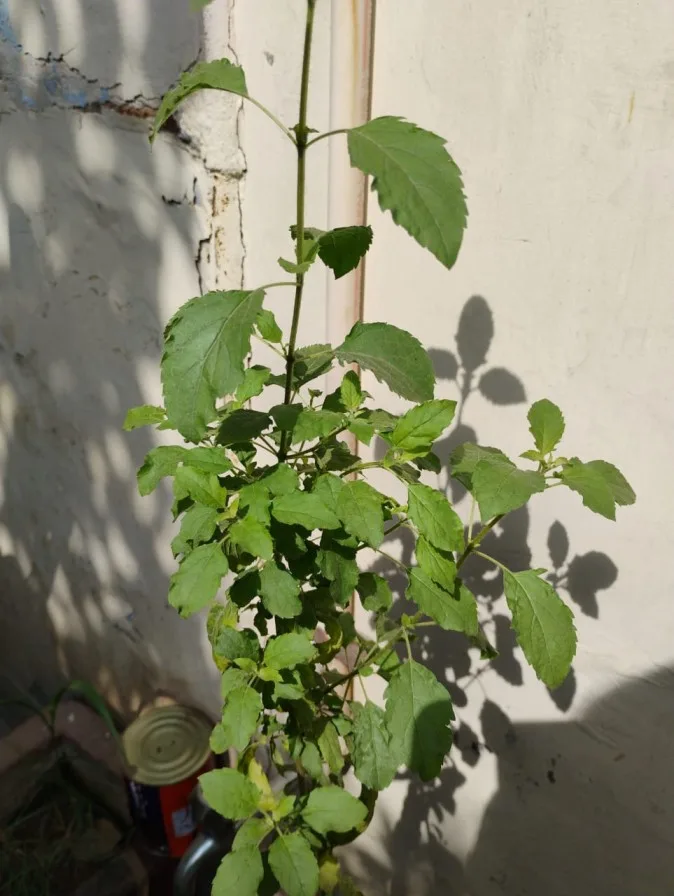
Holy basil is full of chemicals that are found in plants and certain foods; furthermore, these chemicals can have an effect on living organisms, tissues, or cells. In addition, they have a good effect on humans by promoting good health and preventing cancer and heart disease.
Some of tulsi medicinal uses are given below :-
- Effective on Cold and Flu
- Maintains the level of sugar
Products That are Made after Planting Tulsi
There are so many Tulsi products that are used in making tea,skin and hair care and many more.

Herbal Tulsi Tea
According to Ayurveda, Tulsi tea is herbal infusion without any caffeine,full of nutrients and antioxidants.
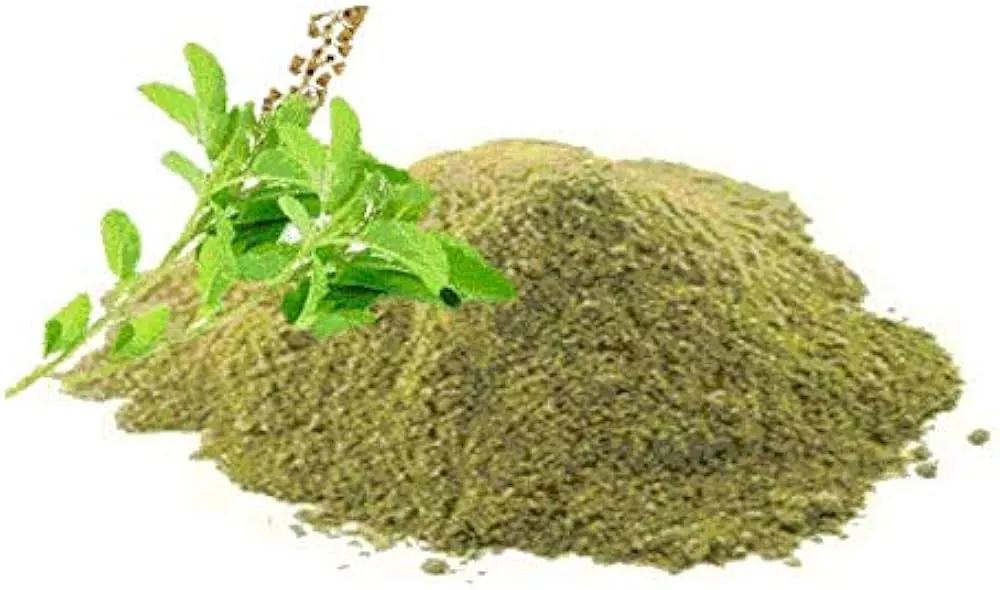
Tulsi Powder
Leaves of Tulsi are dried up and grind into powder. Then this powder is
- Used as Face masks ,
- mixed in smoothies
- put in boiling water to help to ease the pain of sore throat.

Tulsi Oils
Holy basil oil is extracted from the tulsi leaves and then :-
- Used for its antimicrobial and anti-inflammatory properties.
- It is applied to skin infections or other skin issues.
- It is used for Aromatherapy and massages.
- Applied to relieve the joint pains.
Conclusion
Planting Tulsi at home or in your garden leads to an amazing experience; indeed, when we plant Tulsi or any plant from the seeds or a sapling, we start to create a connection. Moreover, growing Tulsi plants offers spiritual, health, and environmental advantages. Furthermore, whether you grow tulsi from seeds or from a sapling, both need proper care and nourishment to make the plant healthy and thrive.
You can start growing Tulsi in pots or your garden today and enjoy its benefits.
“Once you plant Tulsi, proper care is essential! Learn the best practices in our next blog on Tulsi Plant Care!”
